Zakaria Aboukhlal (179cm/5’10”, 159lbs/72kg) has been one of Toulouse’s brightest sparks on the pitch this season in the Occitanie club’s return campaign to Ligue 1 following their relegation from the French top-flight back in 2019/20.
Toulouse spent two seasons in Ligue 2 toiling away for their opportunity to regain their place in Ligue 1 which they managed to do last season under Philippe Montanier. They’ve been doing quite well back in Ligue 1 this season, achieving four wins and four draws in their first 15 games of the season, leaving them sitting in 12th place as the league takes a break for the FIFA World Cup.
Aboukhlal is one Toulouse player you’ll be able to catch at the World Cup as he’s been called up as part of the Morocco squad for the tournament to the delight of himself, his teammates and his manager.
This is a well-earned reward for the former Eredivisie attacker with AZ Alkmaar and PSV Eindhoven academy product who was brought in by Les Violets this past summer and has featured in all 15 of Toulouse’s league games this term, playing the majority of most of them while becoming a first-team regular for Toulouse, bagging three goals and three assists in those first 15 games.
This tactical analysis and scout report shares analysis of the 13-cap Morocco attacker’s role at Toulouse since joining this past summer for €2m and what’s helped him to perform so successfully in Ligue 1. We’ll look at some key strengths and weaknesses to the attacker’s game in this tactical analysis while analysing the important aspects of his specific role within this Toulouse squad and his team’s tactics.
Aboukhlal’s Toulouse role
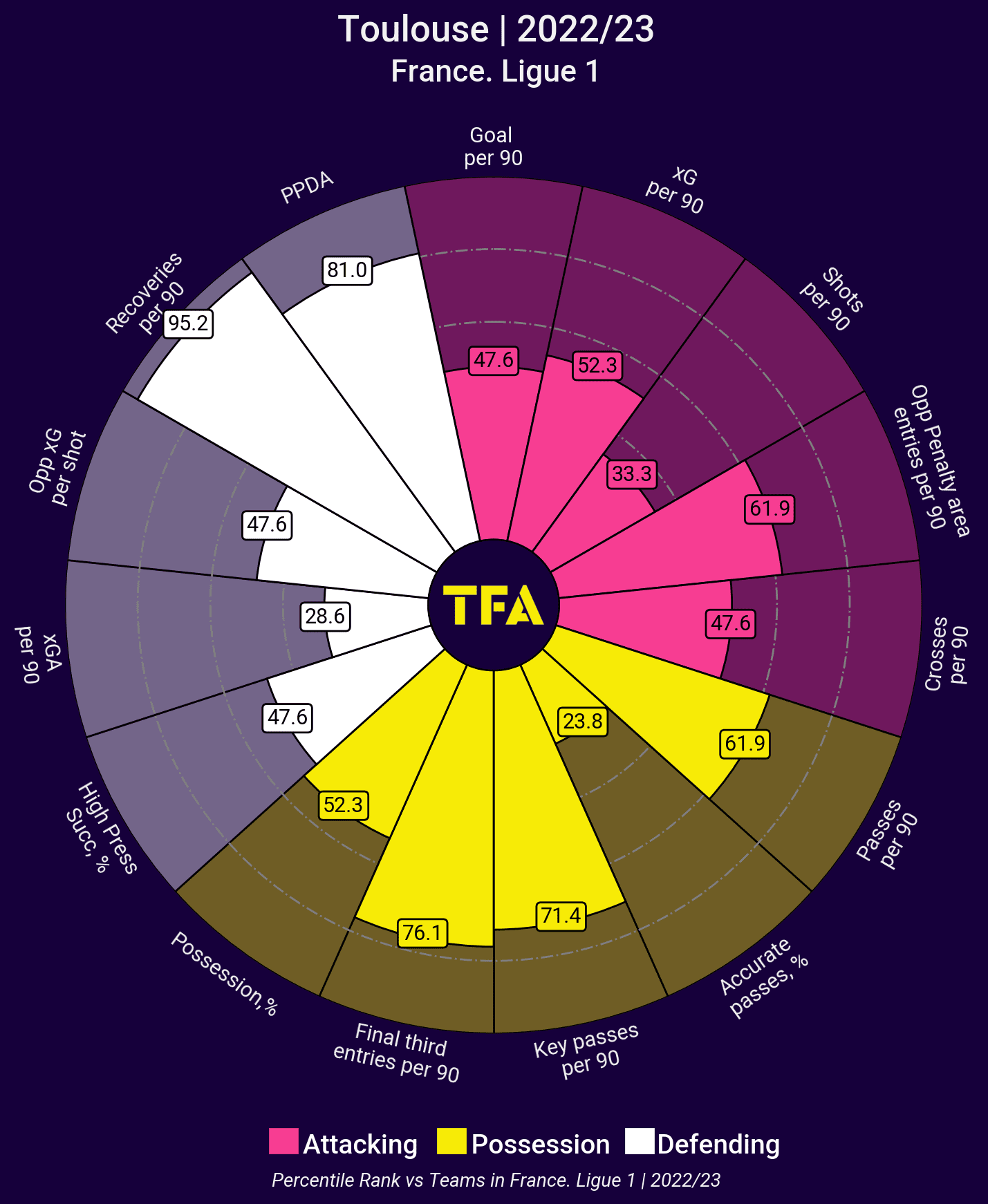
As figure 1 indicates, defensively, Toulouse make tonnes of recoveries per game but don’t exactly have the lowest PPDA, meaning they aren’t the most aggressive team in the league in pressing from the front. However, they do attempt to press high plenty of the time, still, especially for a team that’s new to the league this season and when they do so, their high press success percentage is decent.
They keep plenty of the ball and manage to enter the final third a lot compared to other Ligue 1 clubs, while they also, crucially, tend to enter the opposition’s penalty area a good amount of the time per game.
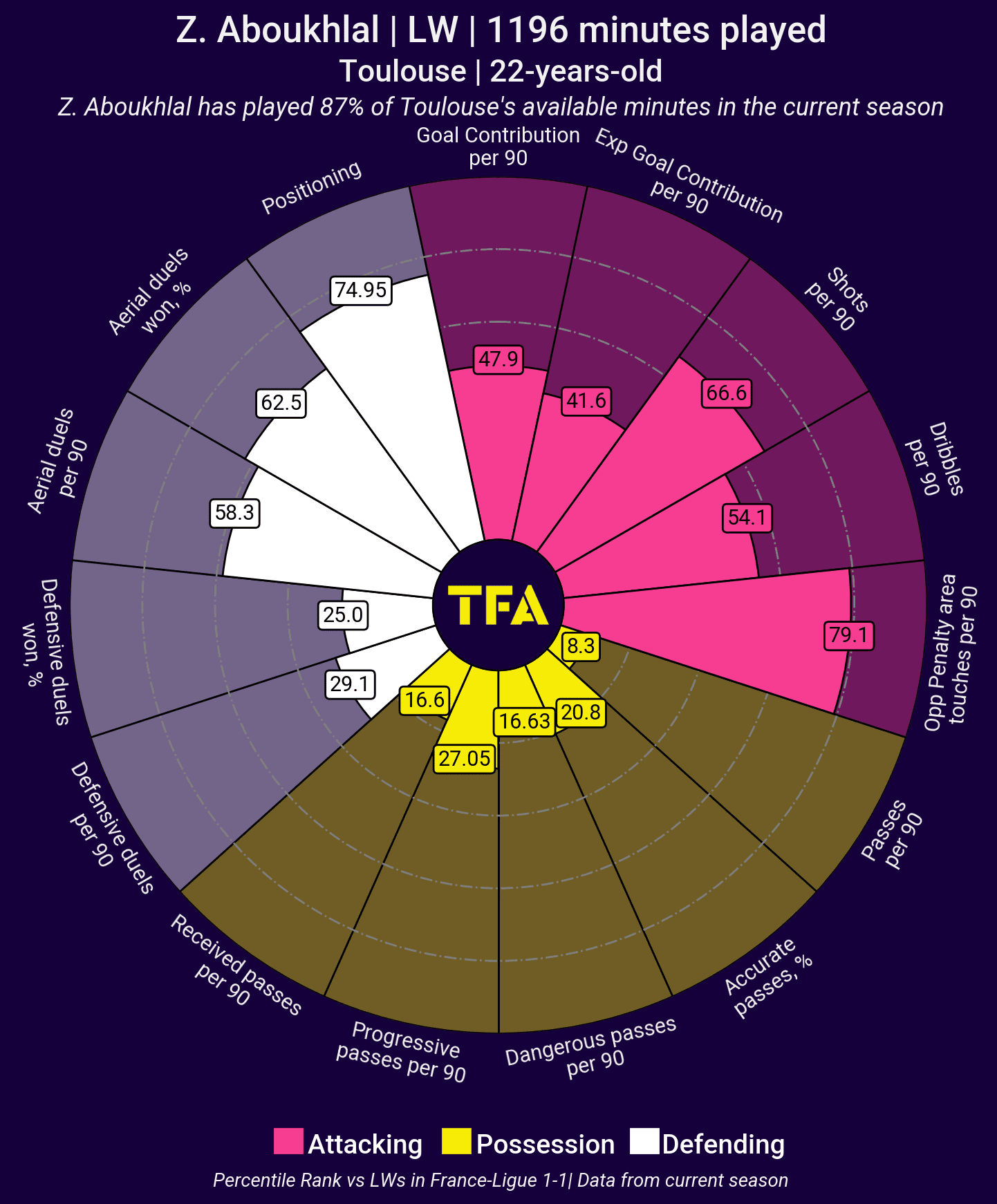
Aboukhlal has an important role to play in these areas of defending from the front, entering the final third and, simultaneously, entering the opposition’s penalty box. However, as figure 2 indicates, progressive passing and creative passing aren’t exactly the player’s strong suit. Instead, he’ll create his side’s final third/penalty box entries via off-the-ball movement and dribbling. His success in doing this results in his high percentile ranking for opposition penalty area touches per 90.
We can also see from figure 2 that his tendency to engage in defensive duels is low, as is his defensive duel success rate. Indeed, there’s plenty of room for improvement in Aboukhlal’s defensive game. Physically, he can still improve a lot, and this is something he and his club may want to try and work on together while he’s in Ligue 1, a very physical league, to prepare for perhaps the next step in his career after Toulouse, helping Les Violets to eventually make a healthy profit on the €2m they paid for Aboukhlal’s services.
The attacker could bulk up more and could increase his defensive work rate at times in terms of tracking back to close players down a tad more aggressively to stifle their ball progression, for example.
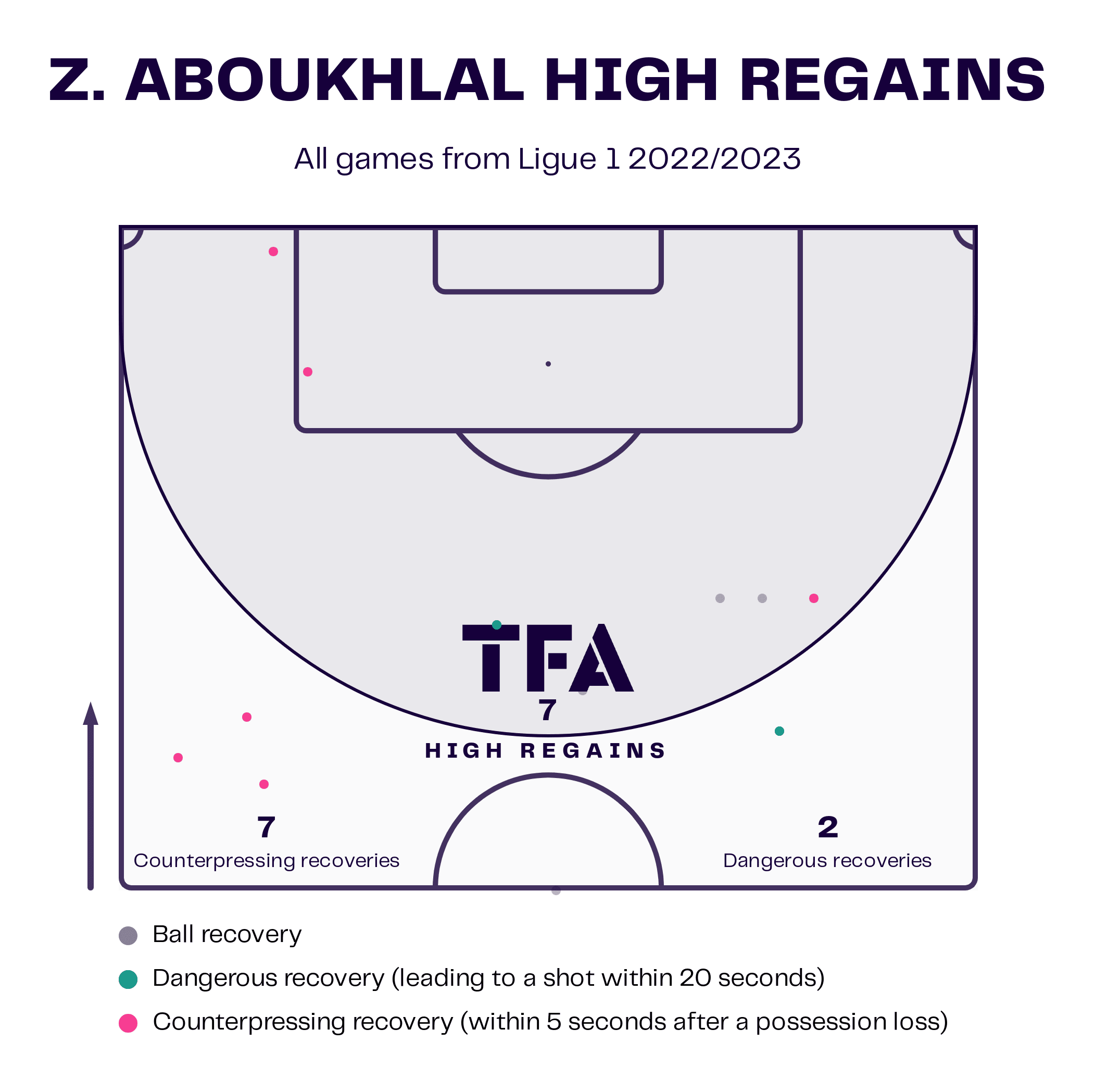
However, we’ll state for the record that we don’t think there’s any major concern needed for this area of his game, just some minor wrinkles to iron out. We can see the attacker’s high regains this season in figure 3, with this image highlighting that Aboukhlal has the capacity to be a threat without the ball high upfield to regain possession for his team and create an opportunity to drive them forward through the opposition’s defensive shape, especially when counterpressing. However, there could be more dots still on this map.
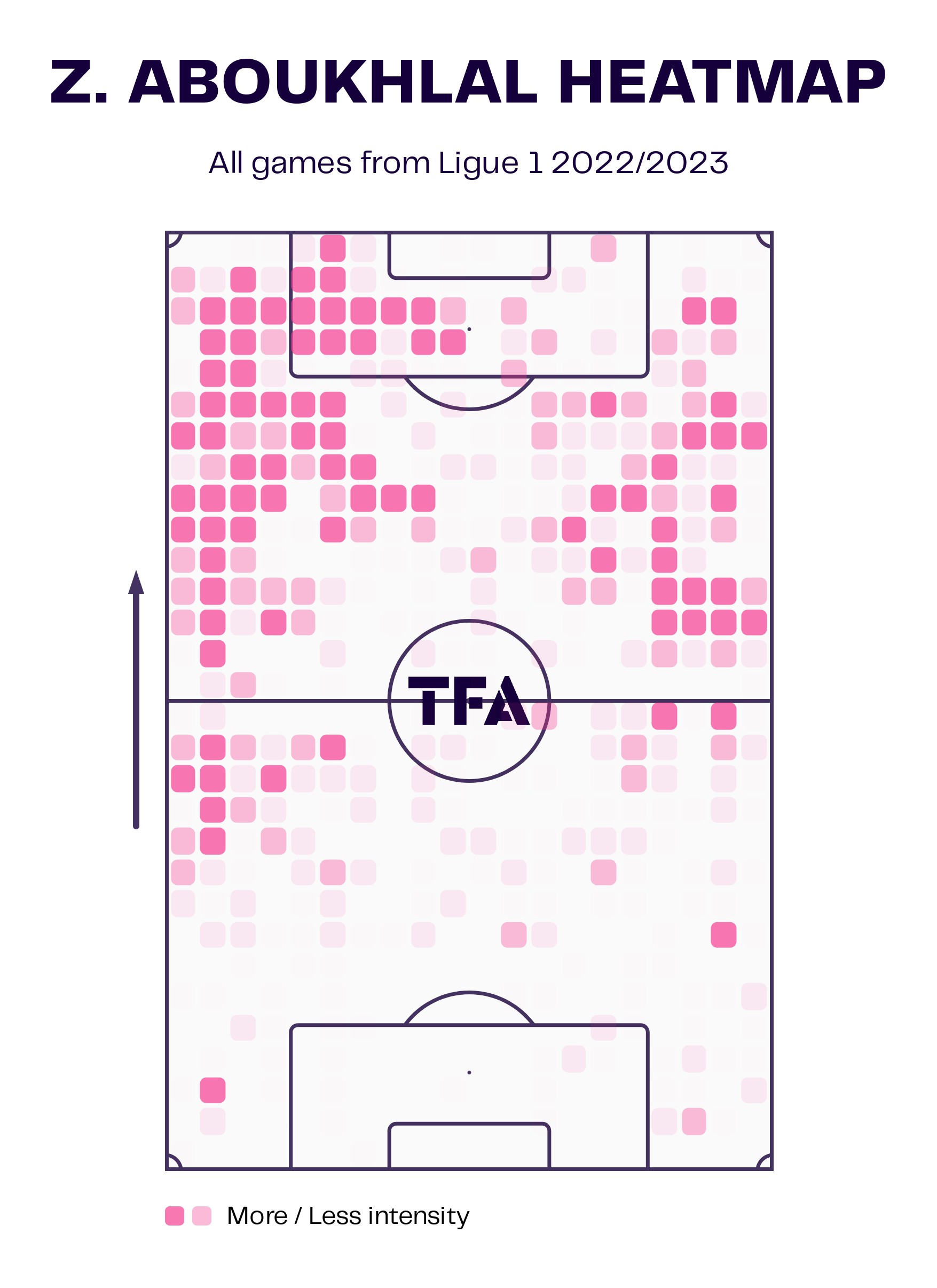
Aboukhlal is two-footed, though favours his left, and comfortable playing on either wing but has primarily played off the left for Toulouse this term. We often find him sitting right on the shoulders of the opposition defence, giving slightly deeper players a passing option in behind the defensive line. His movement and the timing of his runs in these situations can make him a great asset for the team as a receiver when looking to break into the final third.
This is why, in the heatmap in figure 4, there’s so much colour in and around the penalty box and Aboukhlal tends to occupy these high areas of the pitch.
Apart from that, we may see Aboukhlal get on the ball deeper and carry it into the final third, utilising his dribbling skill, or linking up with a teammate to break into the final third via a one-two, again exhibiting a way in which his off-the-ball movement is crucial for helping the team get into the final third and penalty area.
Off-the-ball movement and shooting
Aboukhlal’s off-the-ball movement has a crucial role to play in his side’s progression into the final third — and, thus, their ability to create goalscoring opportunities. This will be analysed in the next section of the scout report.
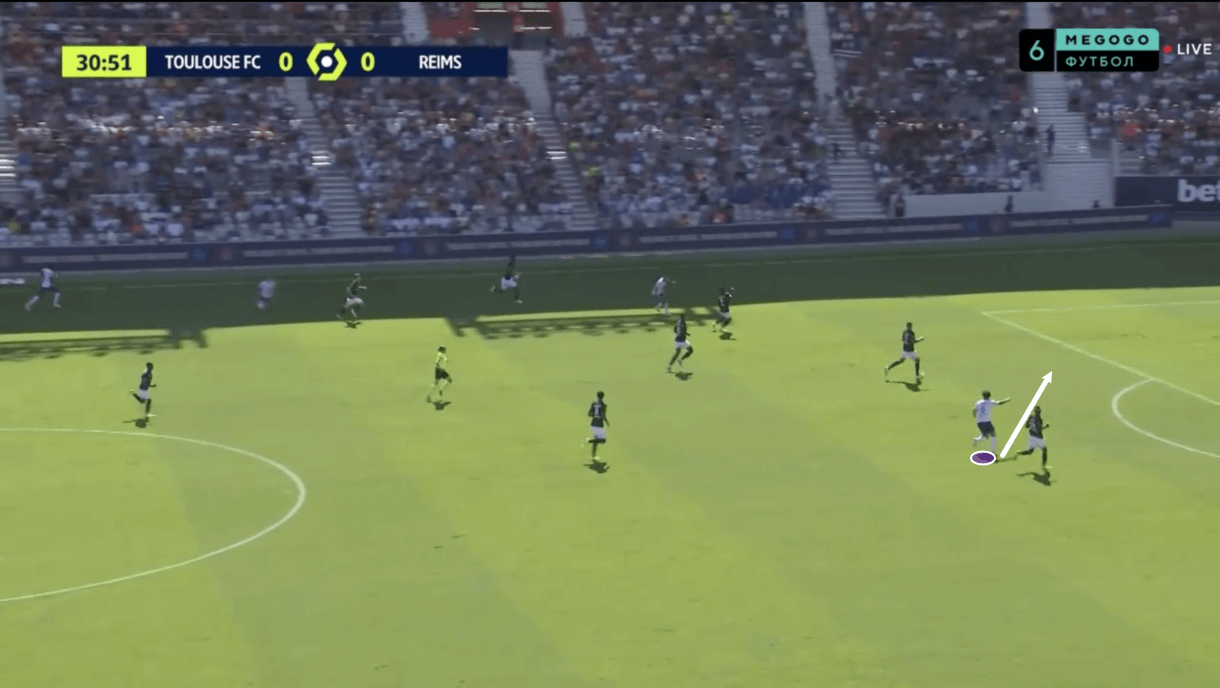
Figures 5-7 show an example of Aboukhlal making a run in behind, giving a deeper teammate a good passing option and creating a goalscoring chance for Le Téfécé. In figure 5, we see Aboukhlal starting his run as his deeper teammate gets on the ball in a passing position while the attacker targets space on the left behind a defender who’s preoccupied with what’s going on on the ball, allowing Aboukhlal to attack his blindside while moving across from the right centre-back to the left.
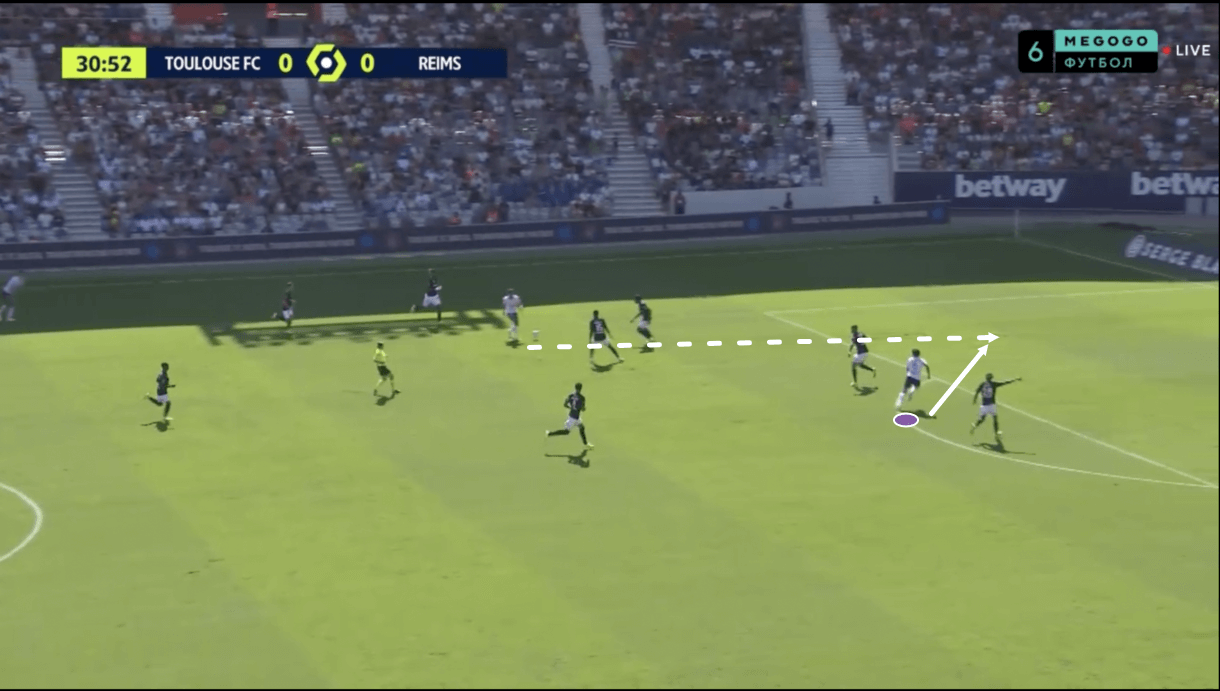
It’s common to see Aboukhlal attack the defender’s blind side as we see in this situation. This can allow him to enter space unmarked as the near defender is unaware of his movement. Additionally, if the right centre-back alongside him who can see his movement follows him as he can see what’s happening, that player can be dragged out of position, thus creating space for another Toulouse player to invade.
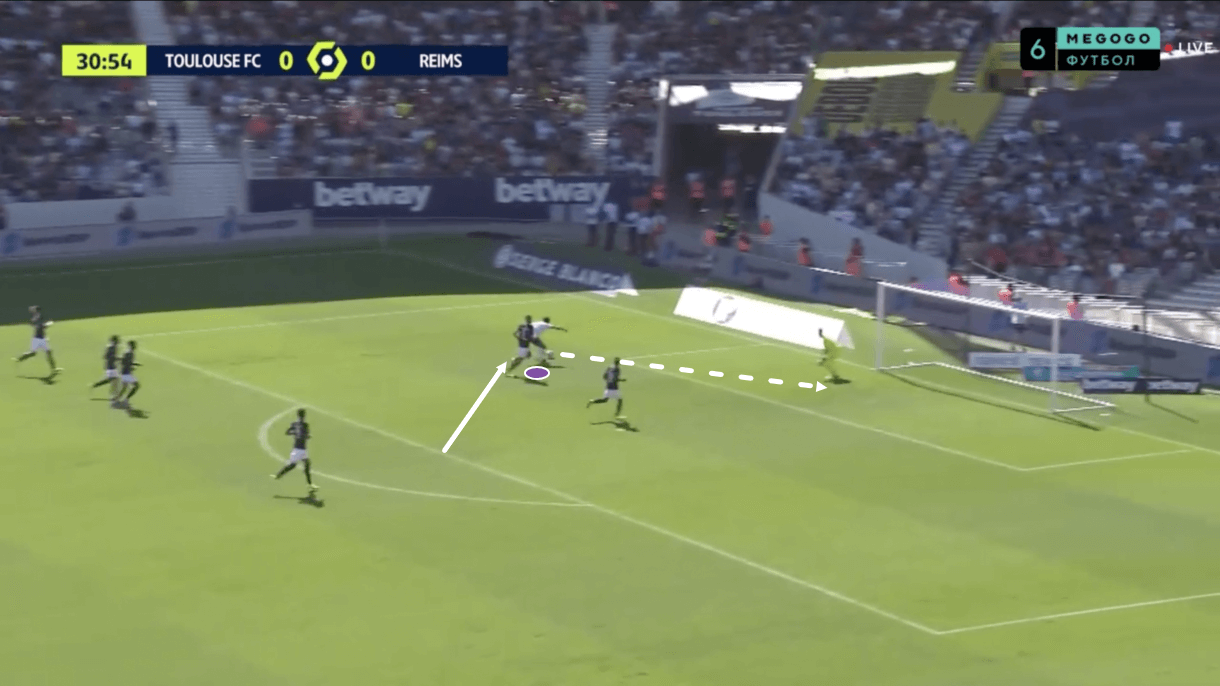
On this occasion, the right centre-back didn’t follow Aboukhlal, and the player ended up getting on the ball inside the penalty area and taking a shot from the corner of the six-yard box on his stronger left foot. This is a shot type that the attacker does typically enjoy taking — he loves shooting across the opposition goalkeeper’s body, particularly from the left, with either his left foot as we see above or his right foot, as we’ve seen a lot too this term.
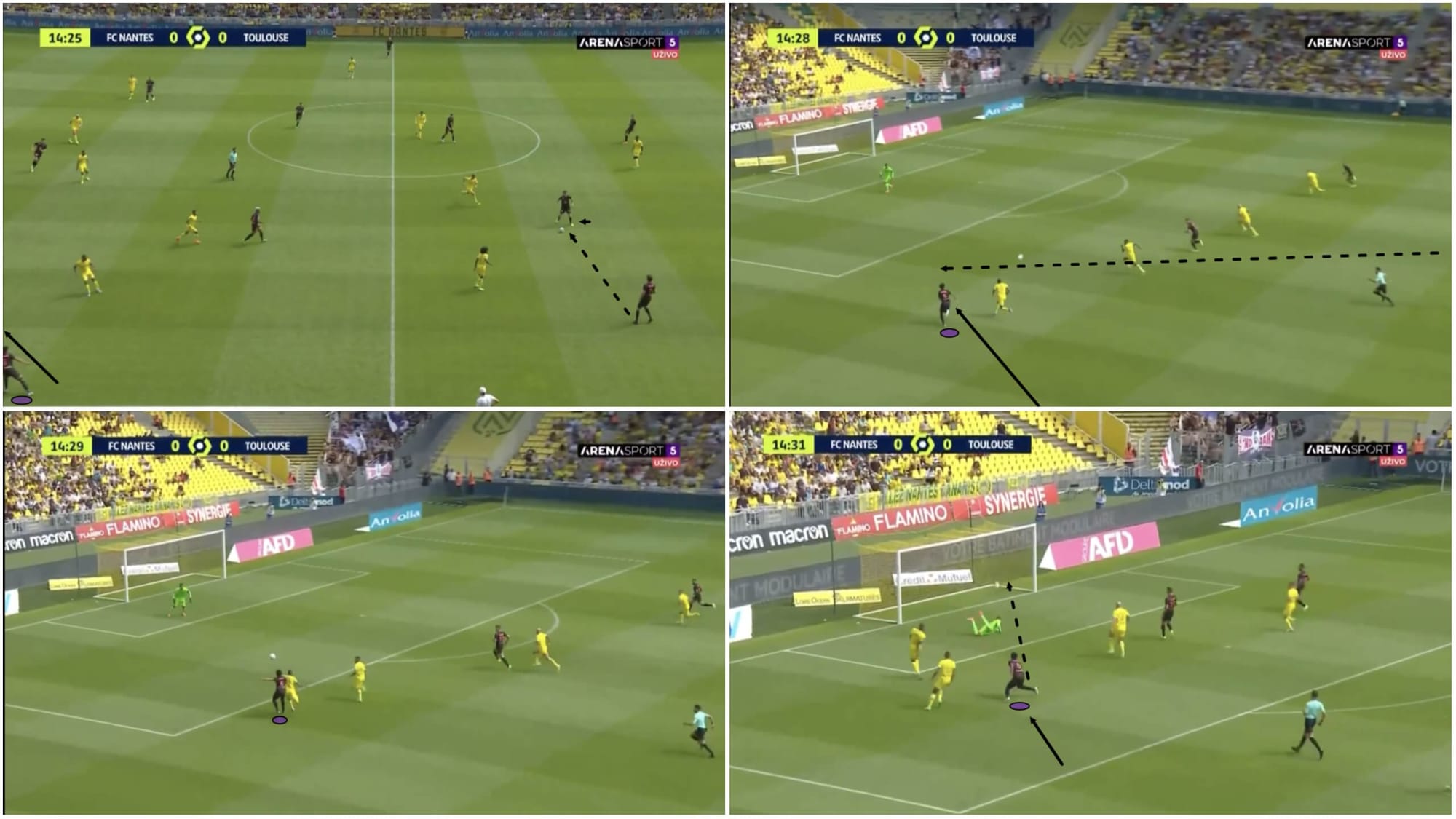
Again, in figure 8, we see Aboukhlal attacking the defender’s blind side with his run. This time, however, the real focus is on how quickly the attacker can just turn and go, creating a direct option over the top very quickly.
Before this image, Toulouse were circulating possession deep, trying to create an opening, but the opposition’s mid-block was compact and allowed little space in between the player’s for Toulouse to exploit. As the ball was played centrally from the left, here, Aboukhlal switched direction and went for it, starting his run in behind the backline as we see in the top-left corner.
The receiver in midfield spotted this and launched the ball over the top for Aboukhlal to chase down. The attacker held off the defender well, using his strength to protect the ball which is another positive in his game — his ability to use his body well — and again shot across goal, this time scoring in the far corner.
Aboukhlal’s well-timed runs are essential parts of his game that create a lot of threat for his team versus the opposition. He’s excellent at making himself a dangerous passing option as we saw in figure 8 and generates plenty of shots in his favoured area because of this movement in behind off the left wing.
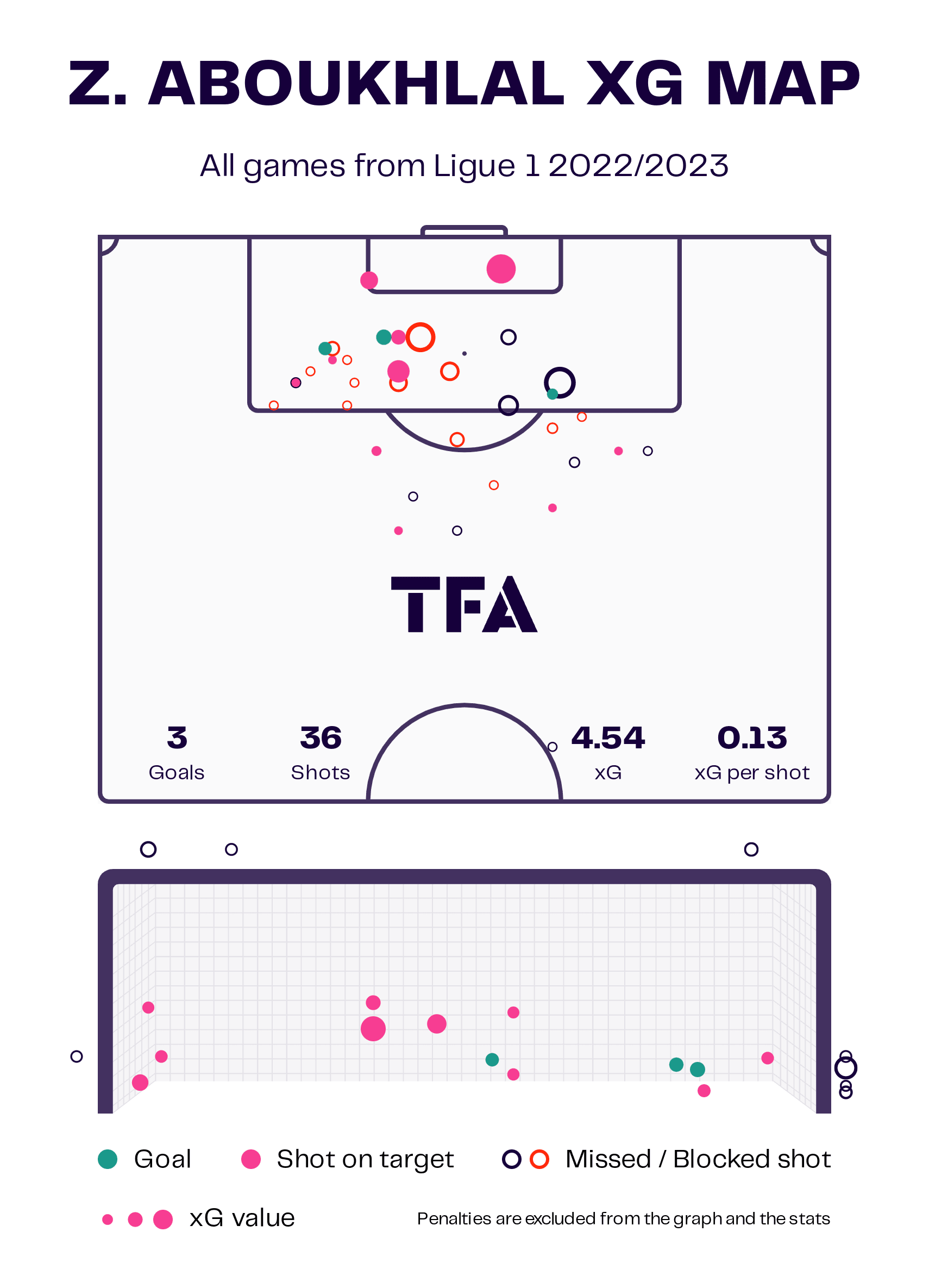
Figure 9 shows Aboukhlal’s shot map for 2022/23 which further shows how much he shoots from the left side of the box. Additionally, we can see he often, but not always, targets to the far corner with these shots — again, both via left-footed shots as we saw in figures 7 and 8 and curling right-footed shots. The player’s two-footedness is really one of his most crucial assets and this must be utilised to the fullest, let him confuse defenders with this trait and create extra goalscoring chances through it.
As figure 2 indicates, Aboukhlal takes his fair share of shots. Going back to figure 9, he’s managed 36 in Ligue 1 this term and I would describe him as a volume shooter. He’s generated a decent xG of 4.54 while scoring three goals, indicating a slight underperformance in front of goal so far but nothing overly unusual that can’t/won’t naturally be corrected.
However, we see from the red circles that aren’t filled in that plenty of Aboukhlal’s shots from good positions have been blocked, so perhaps he could do a better job of avoiding shooting into crowds or just shooting despite a defender being well-positioned to stop that chance right in front of him and take an extra touch to get away from that defender instead or pass the ball to somebody else to avoid wasting the chance altogether.
Dribbling
The next section of our scout report focuses on Aboukhlal’s dribbling, both in terms of his ability to progress the team into the final third from the middle third or deeper and his ability to get the team into the opposition’s penalty box (and what he can do when inside the penalty box, also).
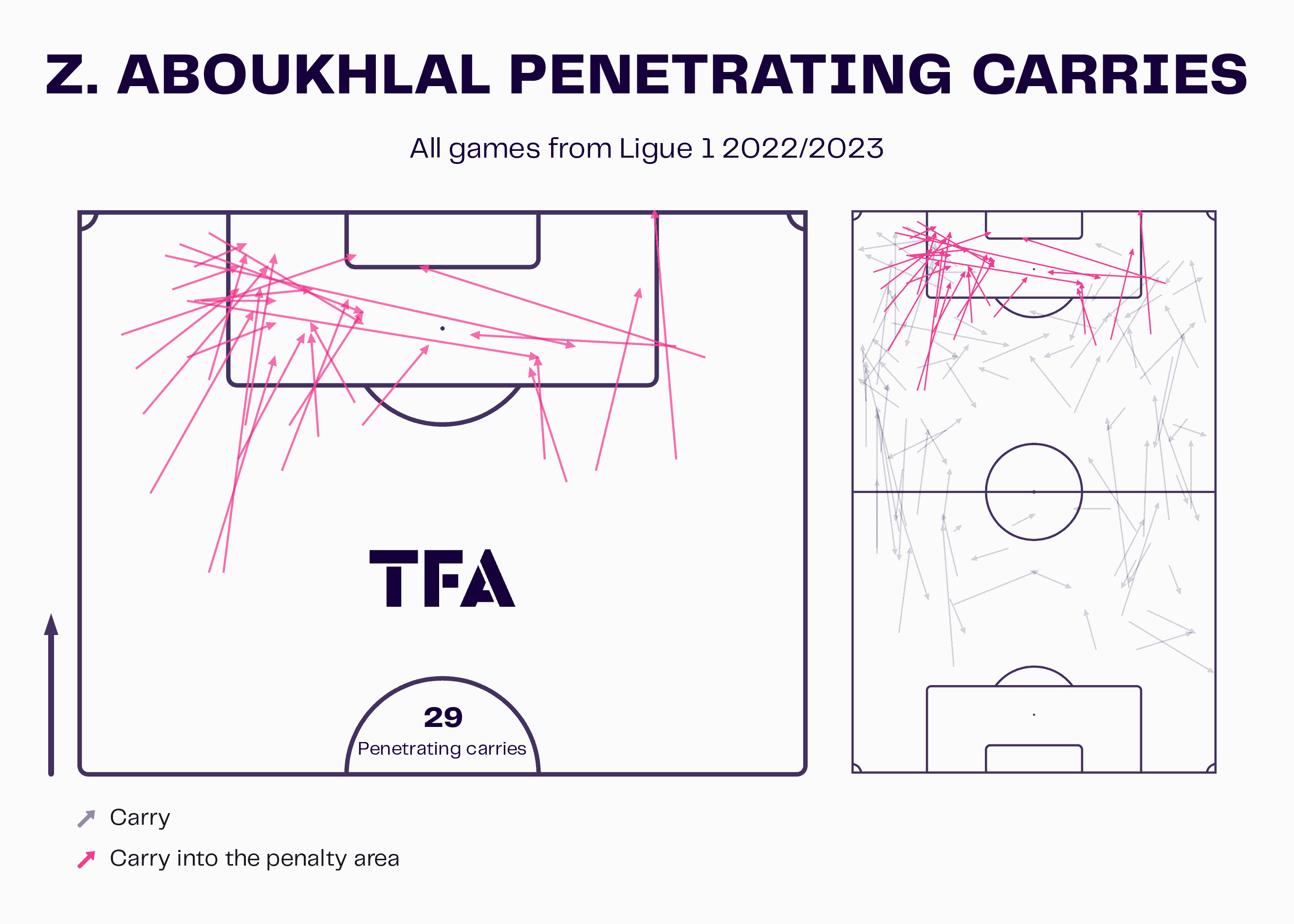
Figure 10 shows Aboukhlal’s penetrating carries from 2022/23. This shows us, basically, where the player breaks lines with his dribbling both when picking the ball up just outside of the final third and driving into it and when picking the ball up further upfield before carrying it into the opposition’s box.
How does he do this, then?
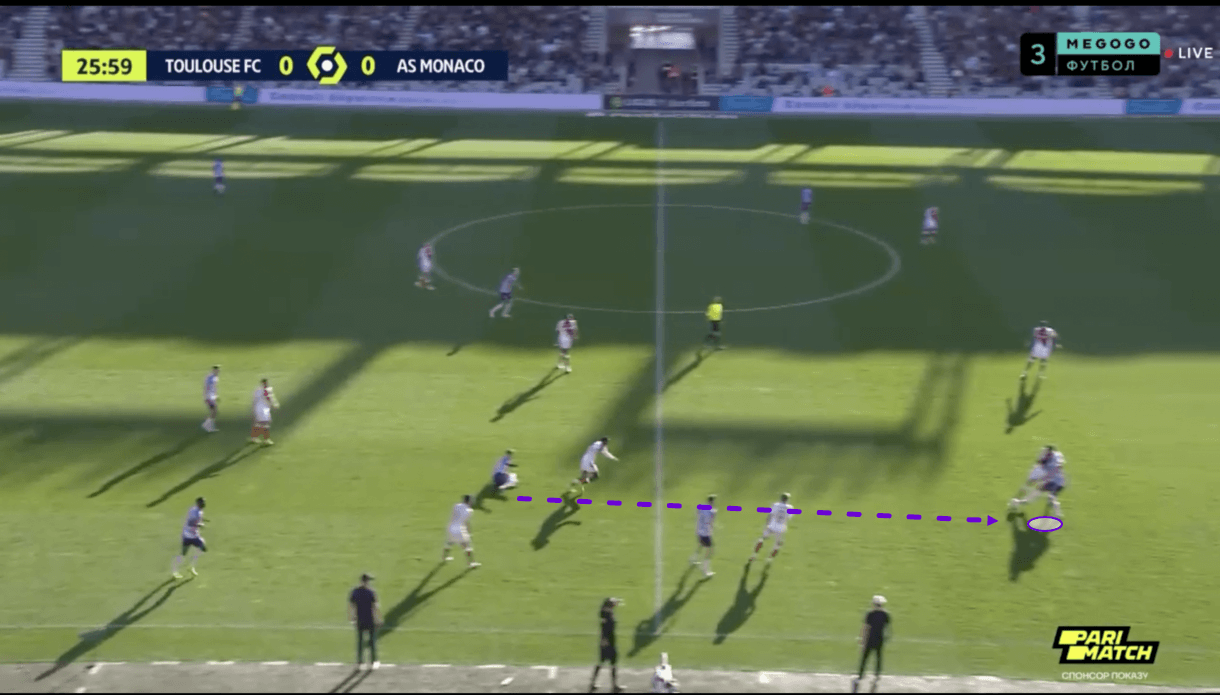
Firstly, in figure 11, we see Aboukhlal receiving the ball just inside the opposition’s half with his back to goal and back to a defender. As we saw back in figure 8 when chasing down the ball over the top, Aboukhlal is well able to use his body to his advantage and hold defenders off, which is exactly what he does in this case too.
As the pass is played into the winger’s feet, he leans into the defender behind him, nudging him centrally while the player opens his body to receive the ball on the far foot and knock it into the space ahead of him to then chase down and carry it into the final third.
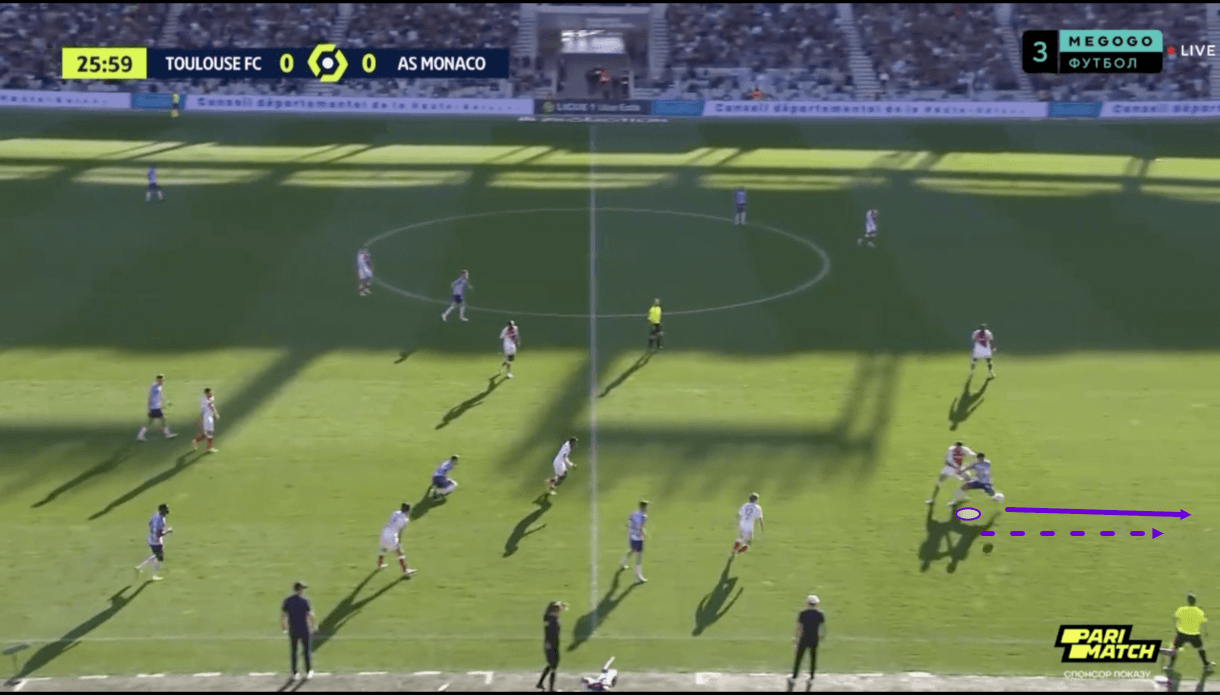
In figure 12, we see the player finish off this move as described previously. From here, he carries the ball into the final third, increasing his team’s level of threat in this attack. The key to success here really lay in the attacker’s ability to receive the ball well on the half-turn despite facing pressure from behind. His intelligent decision-making, agility, physical qualities and good ball control were important here and have been important in his final third entries this term.
All of these skills, especially ball control and agility, have also been important for Aboukhlal in entering the opposition penalty area this season, which he’s achieved quite a lot.
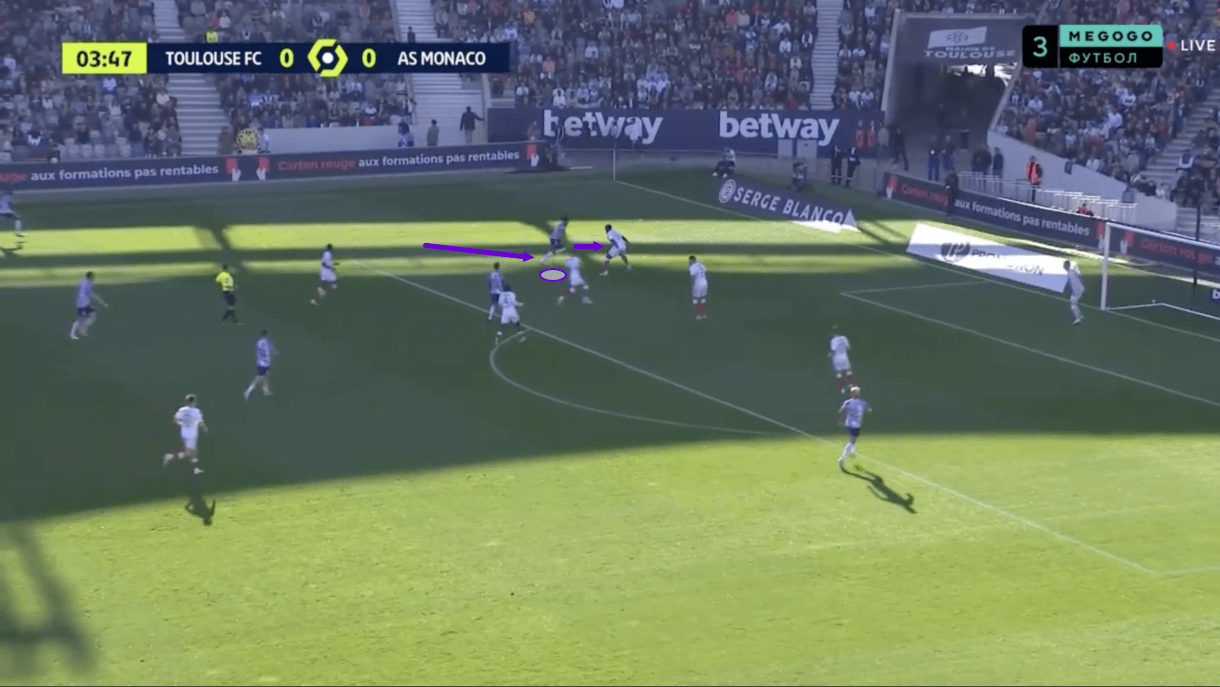
Inside the box, the closer Aboukhlal gets to the opposition’s goal, the more important his ball control and agility generally become. Here in figure 13, we see him running to the outside of the defender.
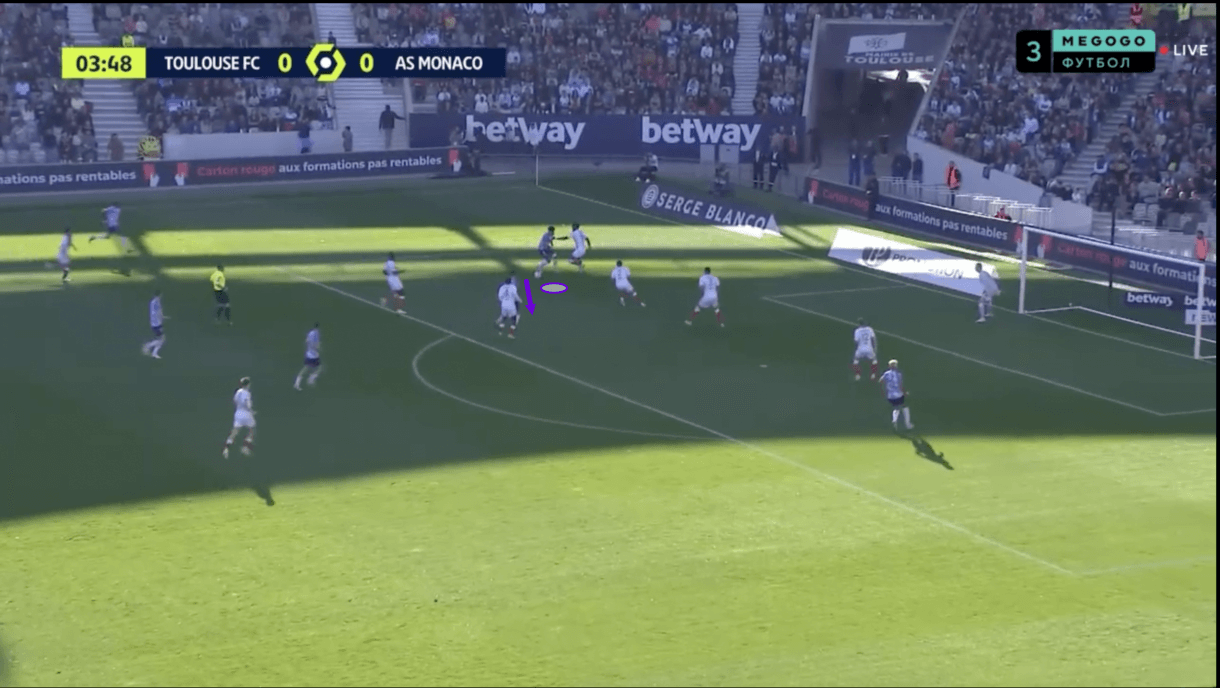
However, in figure 14, we see that he’s quickly shifted to the inside off the inside of his left foot, fooling the defender via his footwork, agility and quickness, and creating a good opportunity for his team. From here, he can quickly get the ball out of his feet, which he’s good at doing in tight spaces, before getting a shot off. Again, the player’s two-footedness is important here and makes his threat to go outside before shifting inside a lot more credible than if he were not so two-footed. This can make it very difficult to defend against Aboukhlal in 1v1 situations.
One reason it’s so difficult to defend against the agile and tricky Aboukhlal 1v1 is his ability to draw fouls from the opposition as a result of these attributes in his game. While the player hasn’t won any penalties this season, he’s threatened to do so and forced defenders to be careful in situations like we see in figure 15 to avoid giving a penalty away. This extra care can create opportunities for Aboukhlal to get a shot off, as was the case above.
However, his ability to draw fouls is good and an important aspect of his game, though those fouls have solely come outside the box this term.
Crossing
For the final section of our scout report, we’re going to take a look at Aboukhlal’s crossing. Though he’s got three assists this season, Aboukhlal’s not amazing at creating chances for other players — he can improve in this area, especially via his crossing which is maybe the area of chance creation that Aboukhlal is most active in, not counting the fact he helps his side create chances for him via his runs and off-the-ball movement regularly.
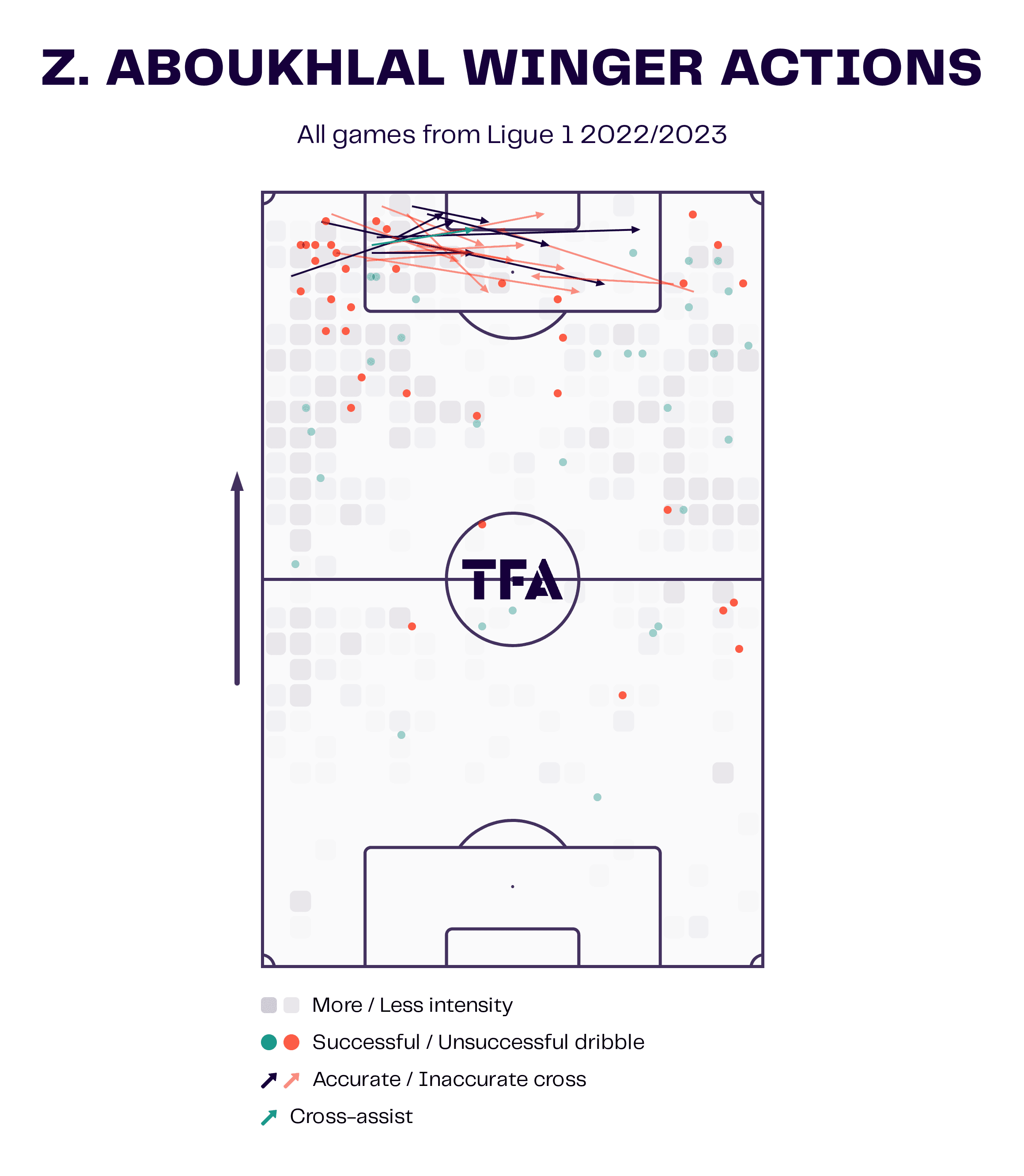
As figure 15 shows, Aboukhlal tends to cross from the byline most often, rarely crossing from deeper/wider positions.

The attacker can drop off, get the ball to feet and progress into these crossing positions via one-twos, which we see an example of in figure 16.
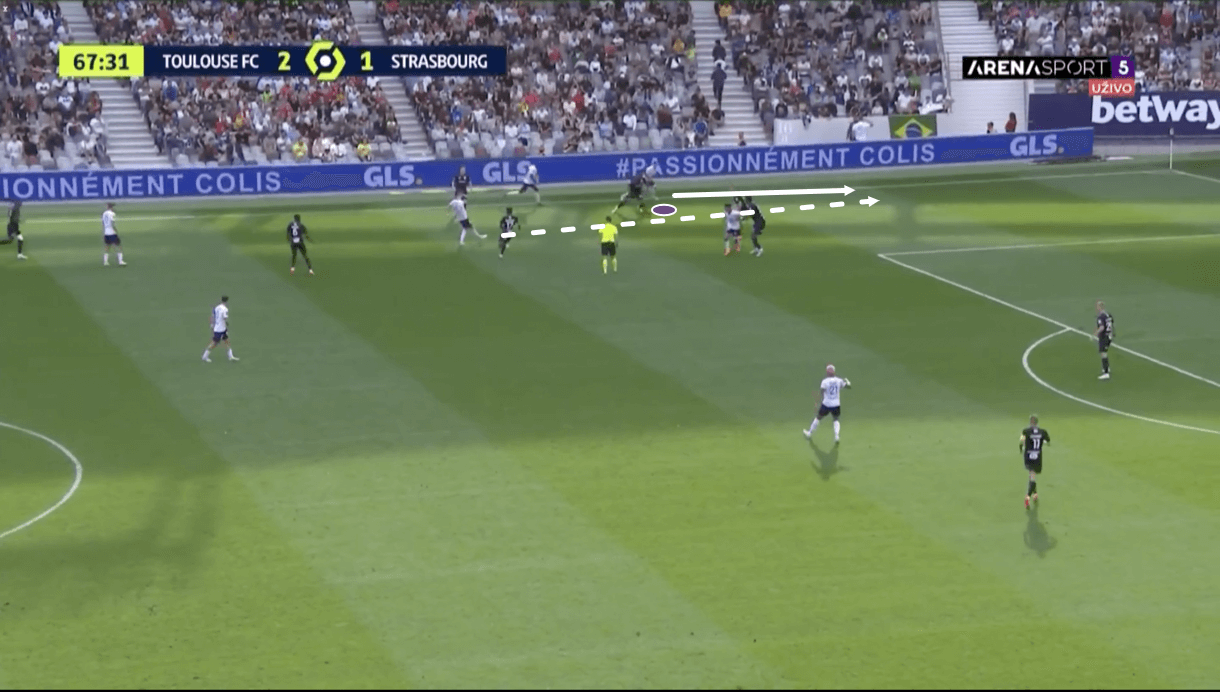
Or the attacker can receive balls played behind the opposition’s backline as we’ve seen in the other sections of this scout report before carrying to the byline and attempting a cutback cross from the byline as we see in figures 17-18.
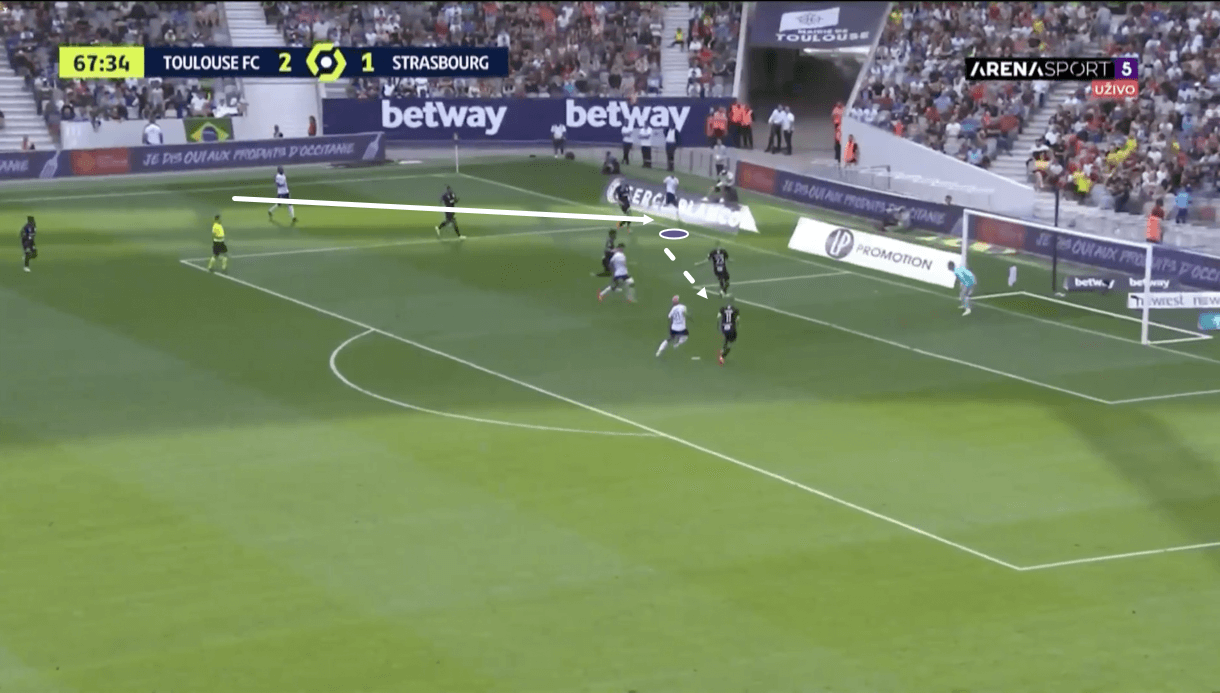
While generally more inaccurate, these crosses can be very effective as when they do come off and find a player inside the box, it’s likely to give them a very good goalscoring opportunity. However, Aboukhlal can be a bit predictable out wide given that these are pretty much the only types of cross he plays.
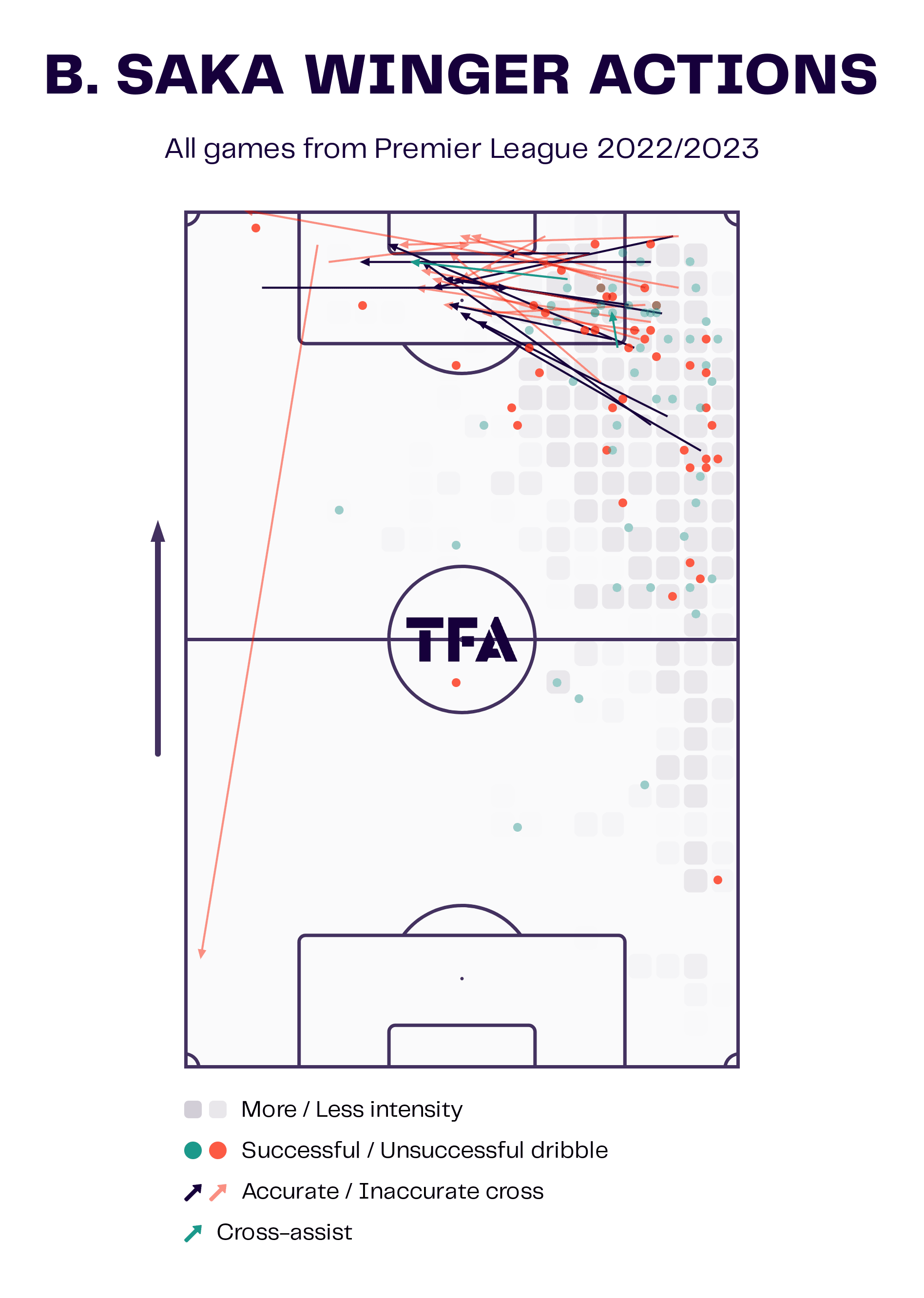
Bukayo Saka of EPL leaders Arsenal provides an example of someone who does play plenty of crosses from the byline but also runs to the byline and cuts back onto his other foot before curling a cross in, making him more unpredictable out wide and, thus, more difficult to defend against. He’ll run to the byline and sometimes cut the ball back to his trailing foot before playing an inswinging cross into the penalty area.
As figure 19 indicates, the player’s crosses from deeper tend to be more accurate. This isn’t a major surprise, as he gives himself more time to actually get his head up and look at his options in the box this way compared to the hectic nature of quickly running to the byline and crossing it in low.
With Aboukhlal’s two-footedness, this is something he could incorporate into his game more off either wing and add some extra unpredictability to his game while also boosting his cross success. This may ultimately help his success from low-driven cutback crosses too, as defenders won’t be able to bank on the low cross coming in from the byline the first time anymore either.
Conclusion
To conclude this tactical analysis and scout report, it’s clear to us that off-the-ball movement and dribbling are the two key strengths within Aboukhlal’s game that have helped him to be so successful with Toulouse in 2022/23. Meanwhile, though his shot selection is good, it leaves some room for improvement, as does the player’s defensive contribution and crossing.
If Aboukhlal can carry his Ligue 1 form into the World Cup with Morocco, he can be an excellent asset for his national team and a definite player to watch at the tournament.





Comments